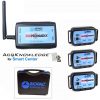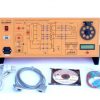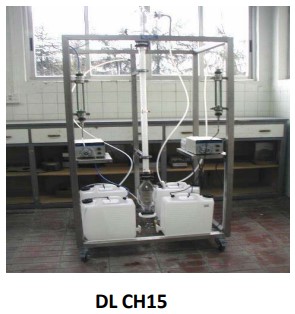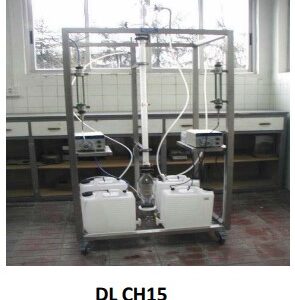DESCRIPTION OF THE PLANT
The equipment is mounted on a structure of stainless steel AISI‐304, that ensures robustness and durability. The structure is equipped with four self‐locking wheels, thereby facilitating the displacement of the equipment.
OPERATION OF THE PLANT / TECHNICAL FEATURES
The equipment presented here works in continuous at countercurrent and by contact between phases through a packed bed, with the mixing and the separation taking place simultaneously and continuously. The feed is introduced at the top of the column and the solvent is introduced through its bottom. Light liquid drops ascend through the mass of the heavier liquid flowing down the tower as a continuous stream. The droplets are collected at the top and form the lighter liquid stream exiting the top of the tower, while the heavier liquid leaves the bottom of the tower. The extract is the stream of solvent after it has received the solute contained in the feed (light liquid). The refined product is the stream of feed, once the solute (heavy liquid) has been extracted. There is a continuous transfer of matter between phases and the phase composition varies as it circulates through the tower. In any horizontal plane the equilibrium is not reached, but, conversely, the separation of equilibrium is what provides the impulse force for the transfer of mass. The main element of the plant is a borosilicate column of 1900 mm. in height and 38.5 mm. of internal diameter, where the process takes place. The trainer is complete with 2 adjustable flow peristaltic pumps, that are responsible for the inlet of both the light and the heavy liquid into the column,
two borosilicate rotameters with steel AISI‐316 float to monitor the flow of both liquids, four 20 liters tanks for the feed liquid and for collecting the products resulting from the extraction process. The column is supplied with three side ports for sampling. The filler material is formed by AR glass Raschig rings of 6 mm. in diameter and 6 mm. in length, supported on an plate with orifices made of Teflon and located at 370 mm. from the bottom of the column. At the bottom of the column there is a needle valve of stainless steel that is used to manually regulate the flow of heavy liquid outwardly from the column, thus being able to vary the height of the interface between the two liquids. At the bottom of the column there is also a ball valve, in stainless steel, for emptying the column. The outlet of the light liquid is produced at 270 mm. above the entry point of the heavy liquid. Also, the heavy liquid outlet occurs at 140 mm. below the entry point of the light liquid.
















